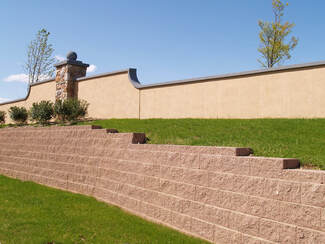 When the flourishing roots of a tree bump into concrete, it can be a shipwreck. Without meticulous planning, building a retaining wall near trees or planting a tree close to a retaining wall can spell disaster for both. Luckily, these two can live in harmony. Below is all you must know about making this relationship work. Retaining Walls Near Tree Roots or Trees Planting and building take lots of energy and time. Before you begin, read this article to be sure you get the best outcome. While you can’t set stones or lay concrete on established roots, you can border your tree with a carefully planned enclosure. Cut the Tree Roots Before Building? Truthfully, it's advised by many certified tree care professionals that you don't. When you begin pruning, you can rob the plant of vital nutrients and water. Also, you can mess with the tree’s stability, raising the possibility of failure. Furthermore, there’s no way to ensure that the loss of roots won’t harm or even kill the tree later on down the line. If you can, construct the wall past the farthest roots in your yard. Honestly, that’s not usually possible because tree roots can grow over 20-feet past the trunk. Before trying to trim the roots, find out what you shouldn’t and should cut. You must never make cuts close to the trunk or in the drip line, the space beneath the canopy. Keep in mind that cutting roots are risky and challenging. So, if you aren’t entirely confident about what to eliminating, contact a certified arborist. Be sure to schedule a tree inspection. Can Tree Roots Damage Retaining Walls? It might seem like they are no match for concrete or durable stone, but woody roots can do real harm. Much of a tree’s growth occurs beneath the dirt. The below-ground roots that you don’t see can slip under the structure to upheave or crack it if it’s too close. Is Planting Trees Near Retaining Walls Okay? It's advised that the two are as far away from each other as possible. If you plant a new tree, find a space that’s way away from the wall as the tree will be once it’s completely grown. Yes, you can have the best of both worlds. Comments are closed.
|
© Tree Service York PA 2016-2020
Leaders Heights | Jacobus | Emigsville | Mount Wolf | Manchester| Marietta | Bainbridge | Wrightsville | Dallastown |Windsor | East Prospect |York Haven | Red Lion | Dover | Loganville | Seven Valleys
Tree Service York PA
2536 Eastern Blvd #102
York, PA 17402
(717) 216-4888
2536 Eastern Blvd #102
York, PA 17402
(717) 216-4888
